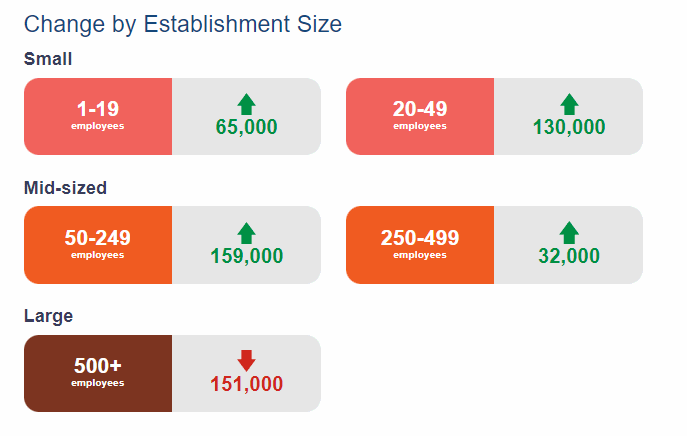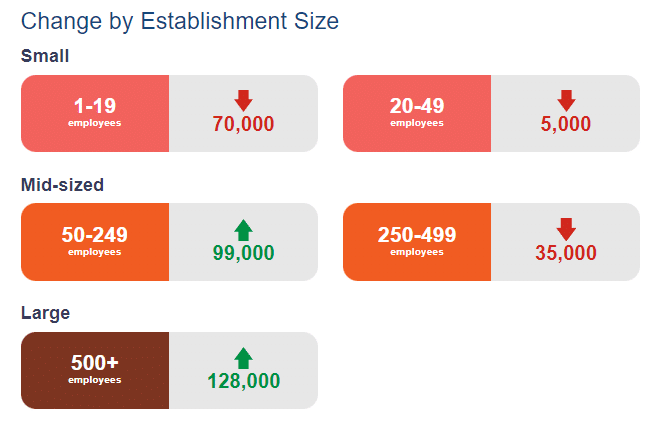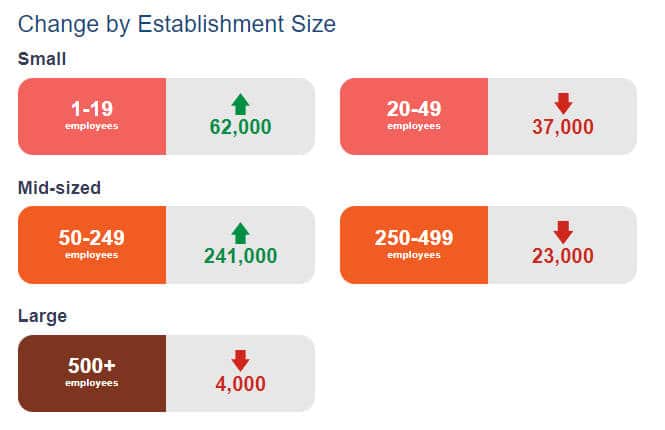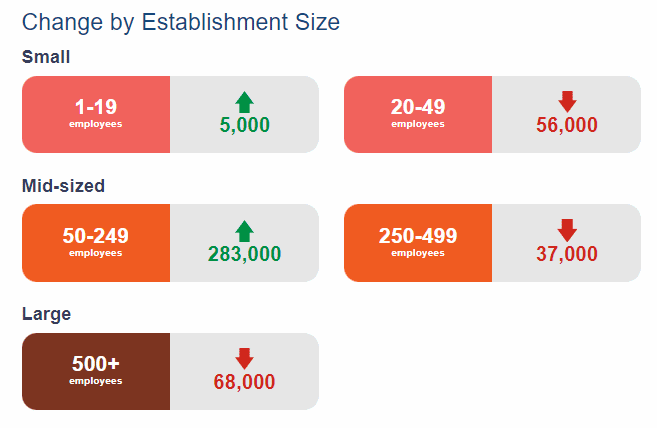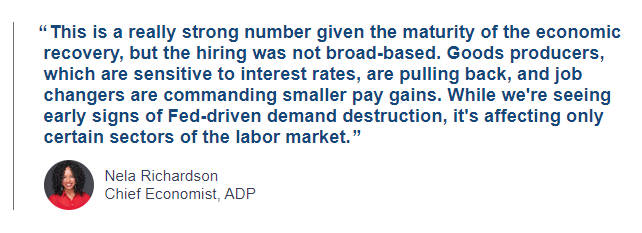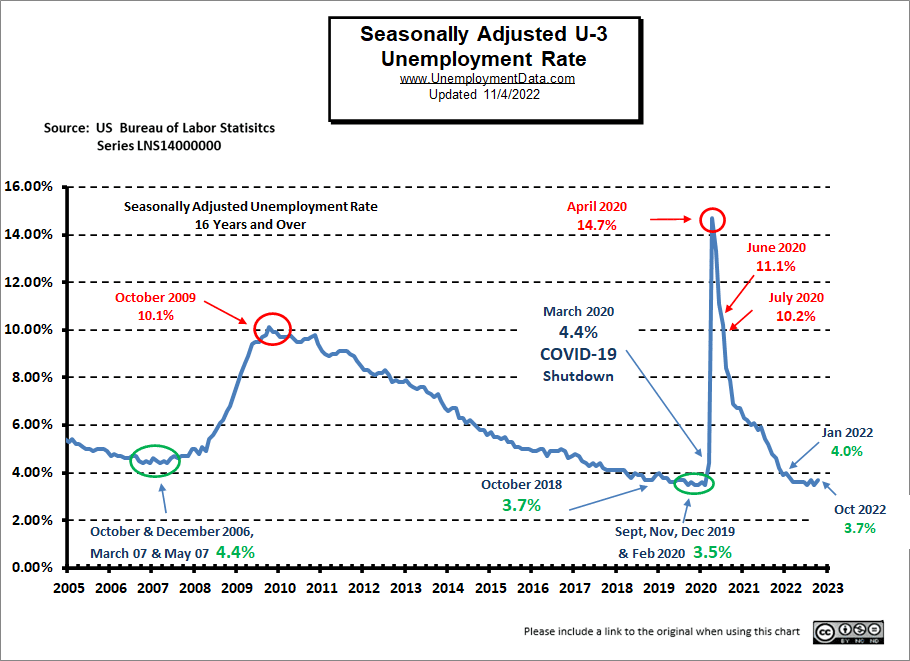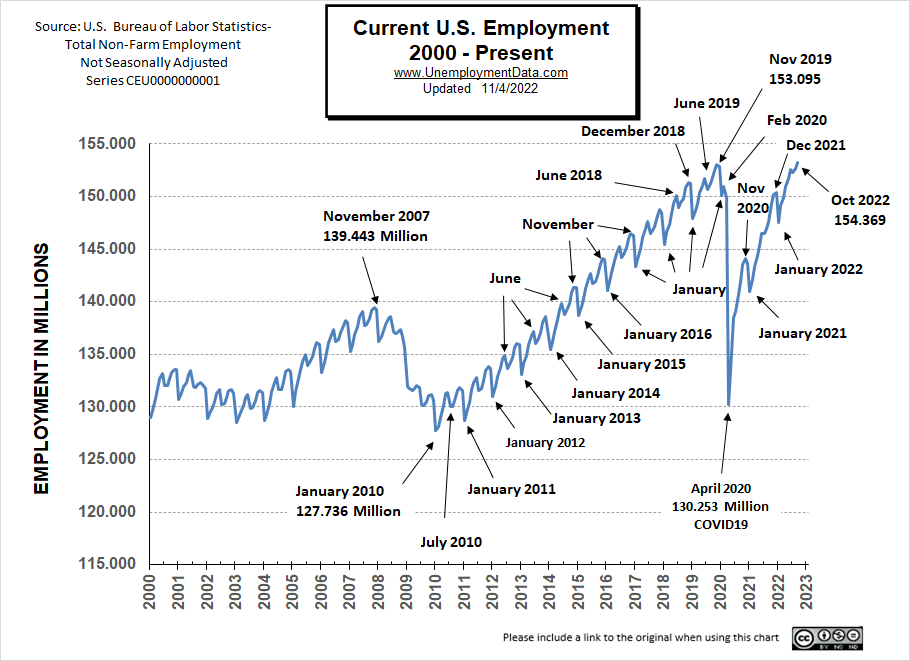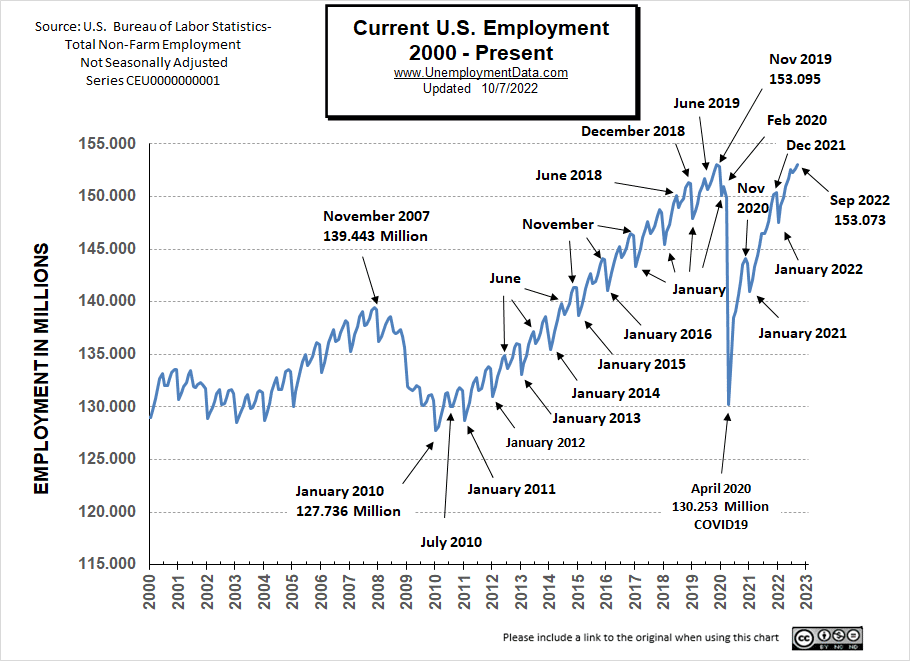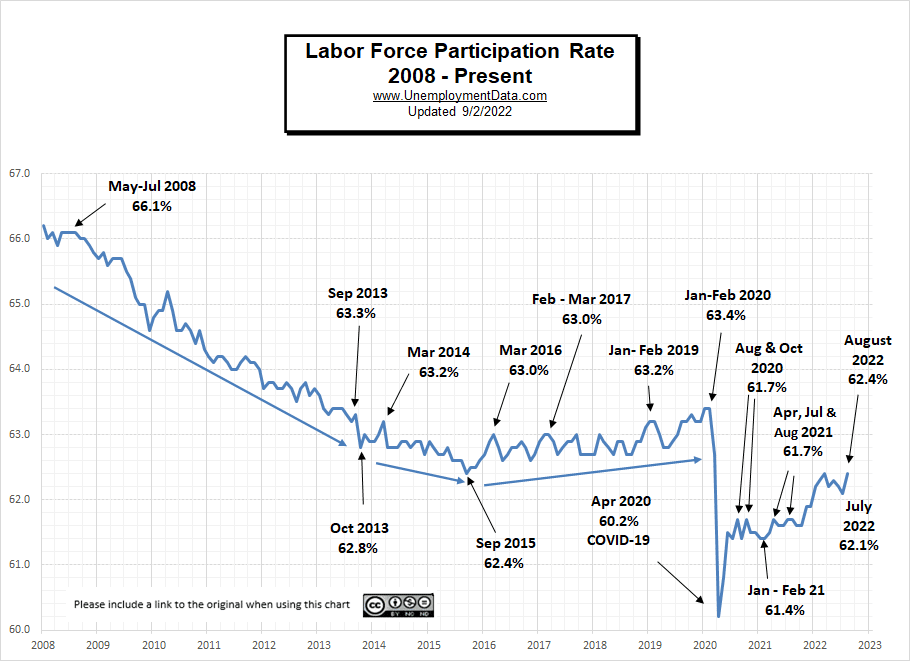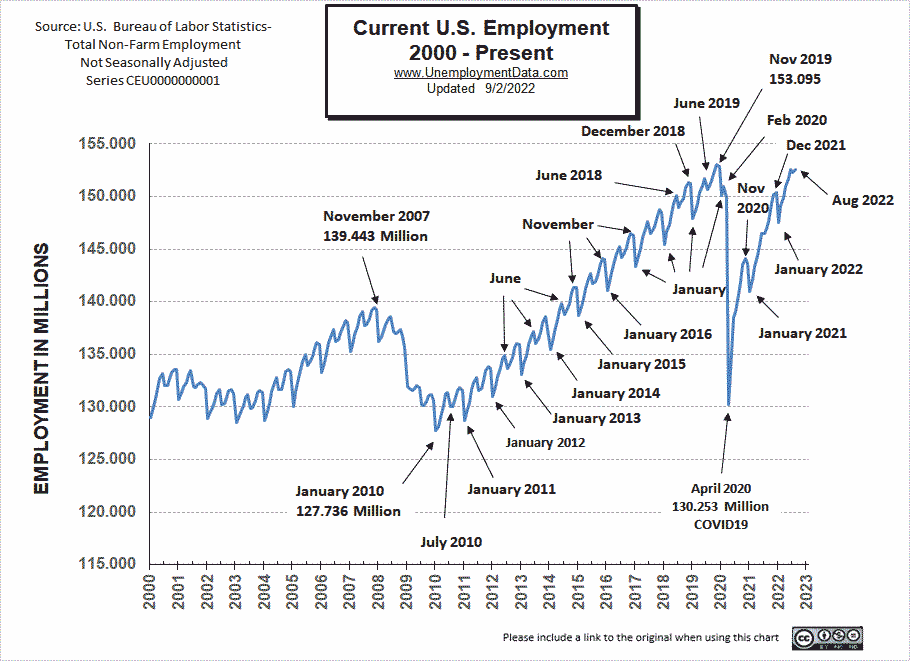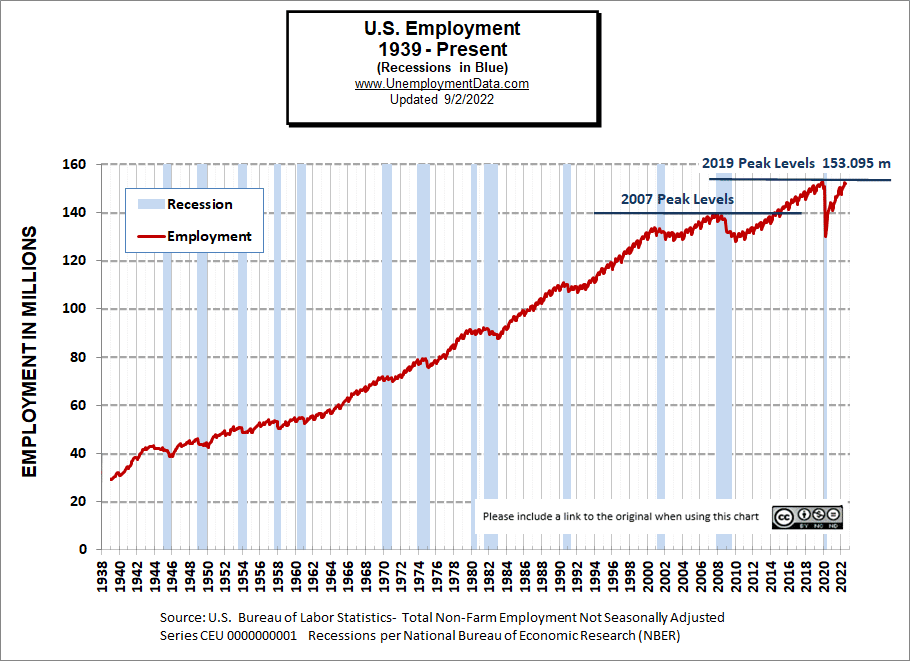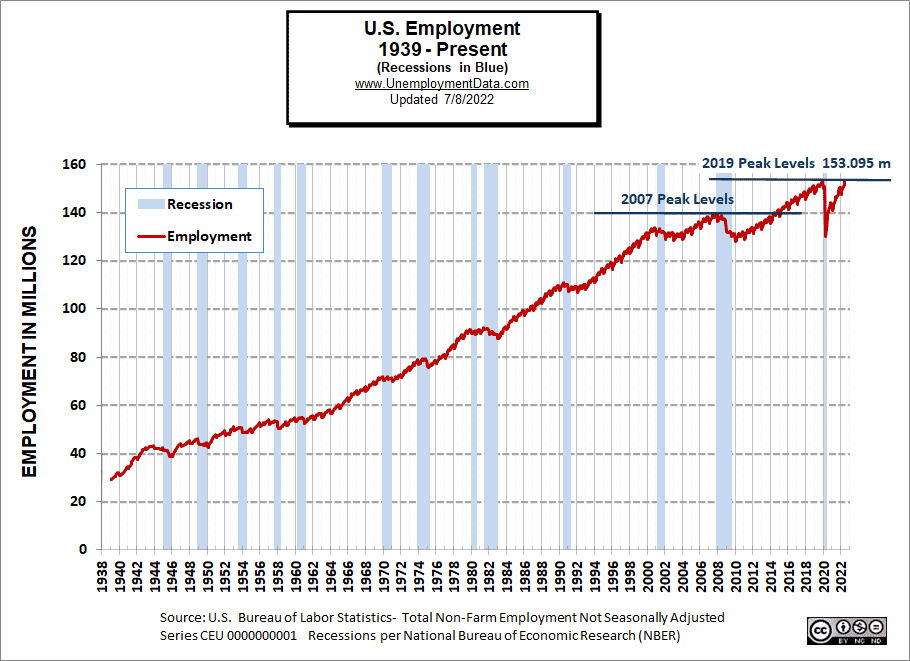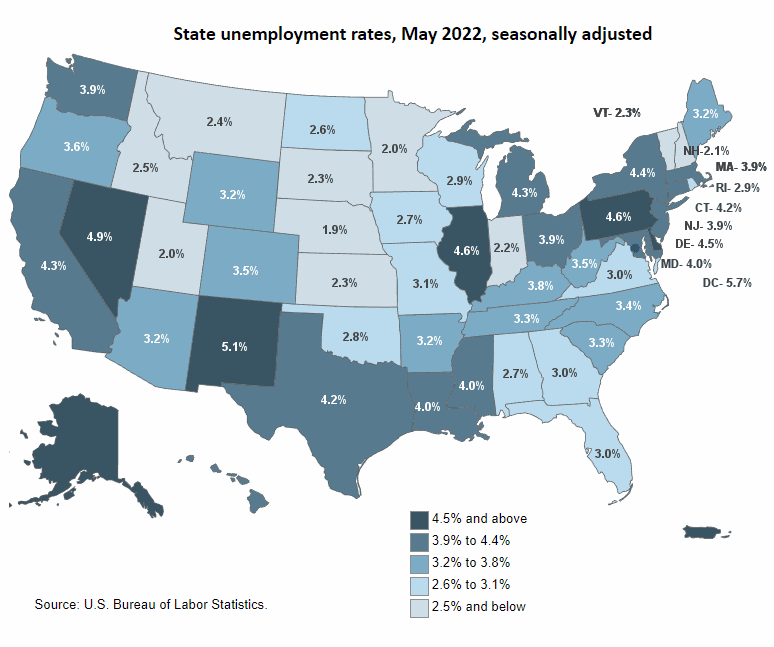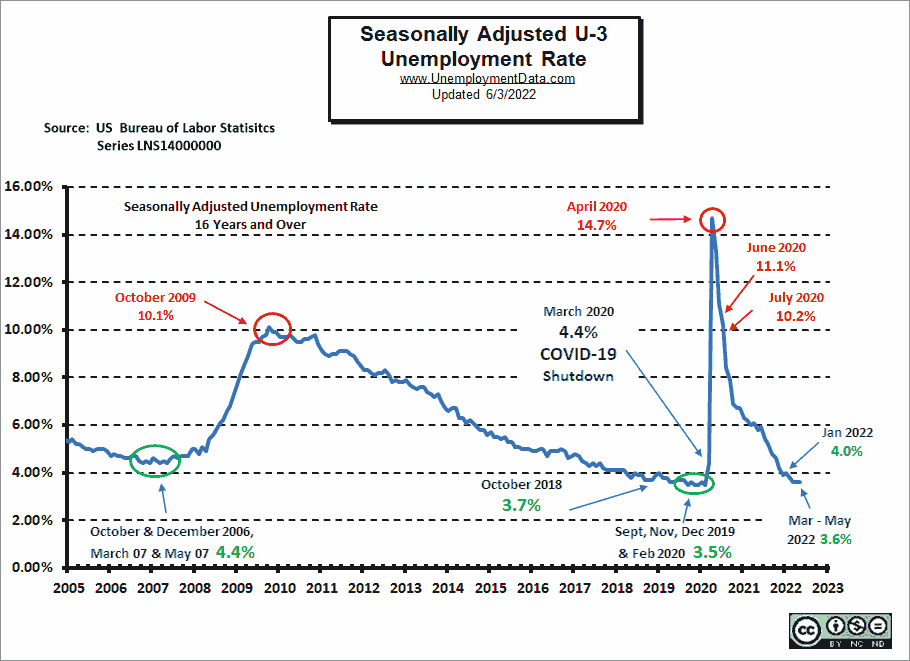The U.S. Bureau of Labor Statistics (BLS) released its employment / unemployment report for January on February 3rd 2023.
Employment Down or Up? – Unemployment Down?
- Unadjusted Employment fell from 155.349 million to 152.844
- Labor Force Participation rose from 62.3% to 62.4%
- Adjusted U-3 fell from 3.5% to 3.4%
- Unadjusted U-3 ROSE from 3.3% to 3.9%
- Unadjusted U-6 ROSE from 6.4% to 7.4%
According to the Commissioner of the U.S. Bureau of Labor Statistics:
“Total nonfarm payroll employment rose by 517,000 in January, and the unemployment rate changed little at 3.4 percent, the U.S. Bureau of Labor Statistics reported today. Job growth was widespread, led by gains in leisure and hospitality, professional and business services, and health care. Employment also increased in government, partially reflecting the return of workers from a strike.”
In addition, the BLS posted the following note:
“Establishment survey data have been revised as a result of the annual benchmarking process, the NAICS 2022 conversion, and the updating of seasonal adjustment factors.| Also, household survey data for January 2023 reflect updated population estimates.”
You can read the full BLS report here.
As usual, they are talking about “Seasonally Adjusted Jobs”.
Looking at the Unadjusted Establishment Survey report, we see…
Originally the BLS reported employment of 154.771 million for December, which they adjusted up to 155.349 million. So, 578,000 additional jobs appeared for December.
I don’t know if it’s just me but, an additional half million jobs seems a bit exceptional, but perhaps in government work it’s just a rounding error.
The current estimate for January is 152.844 million which is down 1.9 million from the original number and down 2.5 million from the revised numbers. But after Seasonally Adjustment they report a half million increase! Typically, employment does fall off in January so some seasonal adjustment is justified but the half million increase in December seems a bit excessive.
We will see what happens next month.
ADP® National Employment Report
According to ADP In collaboration with Stanford Digital Economy Lab employment was up from December but by about 1/5th as much as the BLS reported. But if employment is up, why is the UNADJUSTED U3 and U6 down drastically? Could it be the extra 1.1 million people the BLS added to the Civilian population? December Civilian Population 264.844 million. January Civilian Population 265.962 million.
ADP: Private employers added 106,000 jobs in January
- Employment was soft during our Jan. 12 reference week as the U.S. was hit with extreme weather. California was coping with record floods and back-to-back storms delivered ice and snow to the central and eastern U.S.

Last month small and medium-sized companies were hiring while large corporations are downsizing. This month it was almost the opposite.
December Changes:
January Changes:
January 2023 Employment by Sector
The employment “bubble chart” is a quick and easy way to see how each sector performs on a seasonally adjusted basis. The Bubble’s Size tells us the total Employment for that industry (i.e., larger bubbles mean more people are employed in that sector).
The bubble’s location on the chart tells us that there has been a change in Employment Levels over the most recent month… A bubble further to the right indicates larger job growth. A bubble’s vertical location on the chart shows the average industry salary.
Average Weekly Wages Rose in January
| Date | Average Weekly Wage |
| January 2023 | $1,146.14 |
| December 2022 | $1,125.73 |
| November 2022 | $1,129.01 |
| October 2022 | $1,124.01 |
| September 2022 | $1,119.87 |
| August 2022 | $1116.42 |
| July 2022 | $1,116.54 |
| June 2022 | $1,106.76 |
| May 2022 | $1,105.47 |
| April 2022 | $1,102.01 |
| December 2021 | $1,086.46 |

